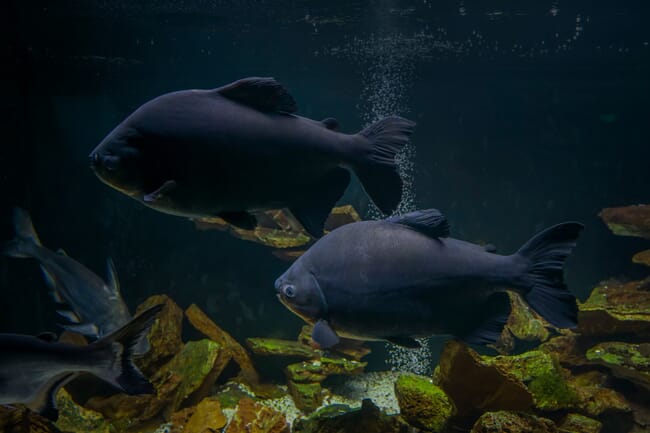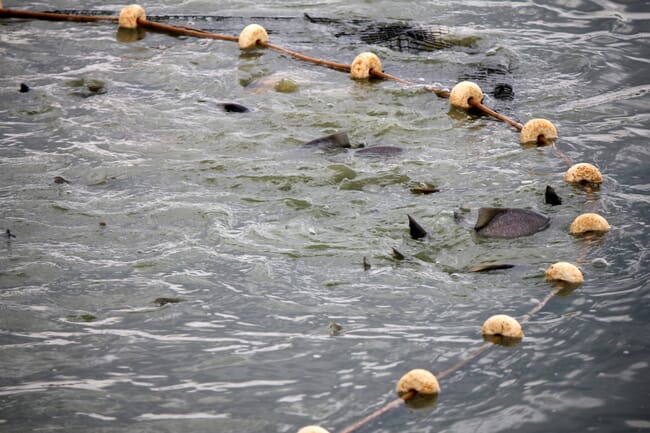
There's reason to believe that Colombia can carve out its own aquaculture niche by producing native and tropical fish species
Though many of its South American neighbours take leading positions in global aquaculture outputs, Colombia’s industry has faced a series of setbacks since its inception in the 1930s. A large proportion of its aquaculture producers run small-scale and low-tech family farms. Colombia’s sector also struggles with high fuel prices and is reliant on imported goods – making it difficult to compete with the larger aquaculture industries in Ecuador and Chile.
A recent review published in Aquaculture has found that the country could capitalise one of its natural advantages to carve out a new aquacultural niche. The authors find that the country has huge potential to develop a tropical fish farming industry and is well-poised to use its native fish species to build the sector. By adopting new farming methods like RAS, investing in genetic resources and increasing per capita seafood consumption, Colombia can strengthen its aquaculture industry and compete at the international level.
Background on Colombia’s aquaculture industry
Colombia’s fish farming industry kicked off in the late 1930s when entrepreneurs introduced rainbow trout (O. mykiss) to cold-water lagoons in the Andes. The trout formed part of a strategy to repopulate the lagoons and give locals an opportunity to exploit a fish that had a greater economic value than native species.
Colombia used a similar strategy in the 1970s when state restocking programmes proposed a controlled introduction of different tilapia species. However, the region’s tilapia hatcheries started overproducing fingerlings and the tilapia began colonising the Magdalena River basin – competing with native species.
In the 1980s, Colombia began to change its aquaculture strategy, promoting native species like white cachama and black cachama. Since cachama varieties are well adapted to Colombia’s varying climate zones and water conditions, the segment has grown. However, Colombia’s aquaculture industry is still dominated by non-native rainbow trout and tilapia strains – accounting for 64 percent of national production in 2020.
In the past 10 years, the government has launched a national aquaculture strategy that creates a monitoring authority for the sector. Key policy outcomes include technical and scientific documents for producers that outline sustainable aquaculture activities and the creation of the planning and development apparatus for the industry. Researchers were also tasked with identifying promising native species for Colombia’s marine and freshwater aquaculture sector.

Policymakers in Colombia have been identifying promising native fish species that could contribute to the country's aquaculture portfolio
Though the establishment of the National Aquaculture and Fisheries Authority (AUNAP) indicates that high-level progress has been made, production data from 2020 shows that Colombia’s aquaculture sector has not been able to capitalise on its native fish species.
Colombia’s untapped aquaculture potential
In addition to having two extensive coastlines on the Caribbean Sea and Pacific Ocean, Colombia boasts several inland watersheds, reservoirs and natural water bodies, making it an ideal candidate for aquaculture development. The country’s climate is well-suited for warm-water aquaculture and easily lends itself to tropical fish cultivation. Recent statistics show that Colombia’s inland aquaculture sector produced 174,067 tonnes of fish, while its marine segment accounts for 3 percent of its landings (less than 4,000 tonnes). Colombia’s marine aquaculture industry remains largely underdeveloped. The researchers note that Colombia’s fish farming sector has been on a growth trajectory – but still faces many key challenges.

Tilapia were introduced in Colombia in the 1970s and are a key aquaculture commodity © Dr Carlos Guevara Fletcher
Colombia’s per capita consumption of aquaculture products comes in at 8.8 kg per year – the lowest compared to the consumption of other sources of animal protein. An additional setback is that most of the country’s 36,000+ fish farms are small-scale and produce between 20 and 600 tonnes of biomass per year. This means that the industry needs to adopt tech strategies to make farming activities more efficient and sustainable. Despite the need, small-scale farmers are often loath to invest money on new aquatech – they fear losing their return on investment.
Other key challenges include a lack of quality fish seeds and the fact that the industry is dominated by rainbow trout and tilapia. In the researchers’ view, addressing these challenges by improving fish seeds and diversifying its species portfolio will ensure the sector’s sustainable growth and allow it to become more competitive.
Optimising seed production by adopting genetic strategies like selective breeding – especially for native finfish – will allow the industry to develop at a commercial scale. Relying on existing stocks isn’t an option. The researchers note that current seeds have posted poor growth rates and suffer high morbidity and mortality rates.
Focusing research and development efforts on native and tropical species could also let Colombia diversify its aquaculture offerings. Farming a wider variety of species that are adapted to Colombia’s ecosystems gives the industry more opportunities to optimise production. It also means that it can embrace different aquatech solutions at its farms.
The researchers conclude that Colombia’s aquaculture sector should work towards implementing production techniques like biofloc and recirculation (RAS) – farm methods with good sustainability and output measures. Strengthening the wider aquaculture sector in Colombia is of vital importance – the industry easily lends itself to the country’s circular economy pledges and can enhance its food security. Its capacity for employment generation shouldn’t be overlooked, either. Embracing its native species could help Colombia’s industry grow and stand shoulder to shoulder with other aquaculture producers in Latin America.




